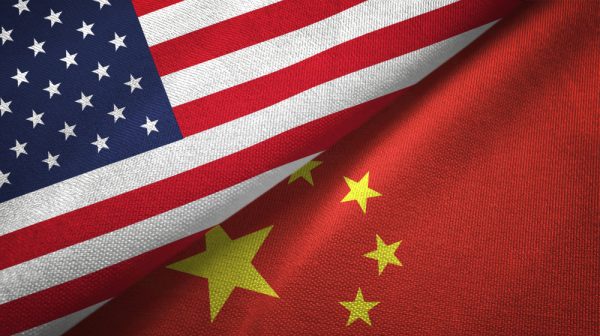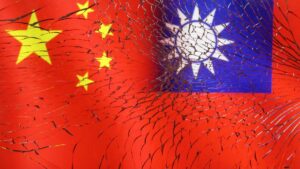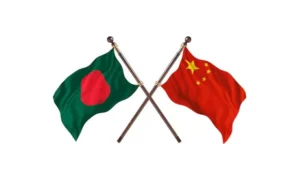Freedom of Naval Ops Latest South China Tug of War
The South China Sea is witness all of July 2021 to the latest round of power projection by China on the one hand, and a loose coalition of US-led Asian countries on the other.
The projection is occasioned by the commencement of Talisman Sabre, fortnight-long two-way maritime training exercise between the military forces of the US and Australia. The exercise ends on July 31.
China has sent two modern, auxiliary, general intelligence vessels to surveil the joint exercise, one of the biggest bi-annual affairs on the continent. Both sides are on a high state of alert, though the Chinese vessels appear to be playing only an observational role.
Australia, which is in a running feud with China since the outbreak of Coronavirus early last year, pointed to the presence of the Chinese ships as proof that Australia and its allies should also have freedom of navigation in the South China Sea.
China, which insists it alone can stake claim to the Sea, appears upset over the invitation extended to some more countries to attend the Talisman Sabre. Australia has invited military personnel from Japan, New Zealand, Canada, the UK and, for the first time, South Korea, to take part in this year’s exercise.
China is said to be interested in observing how the Sabre partners rehearse a critical naval exercise – an amphibious assault. It relates to warships escorting an amphibious party with troops and tanks aboard and delivering the force deep inside hostile territory and seize control of a beachhead. South Korea has sent a warship to take part in the exercise. Japan has sent in a specialist island warfare unit.
The other exercises apart from amphibious landings will include “ground force manoeuvres, urban operations, and air combat and maritime operations”.
Each of these countries will watch how their forces operate individually and as a team. Gaining experience in amphibious manoeuvres is a critical element of the exercise as they are the only strategy to defend the islands in the South China Sea. That is why, China would want to observe how diverse navies of the six countries would integrate their operations.
Significantly, both sides are making a point for the first time. China has not tried to send the surveillance ships under any cover. The vessels are there openly, without hiding the fact that they are observing and recording the exercises. On the other hand, the Australians and the Americans are sending across a message about how openly they are exercising their freedom of navigation in the South China Sea.
Australian defence minister Peter Dutton was quoted as saying: “This sends a message to our friends and to our foes that we have the deepest of relationships with the United States. Our partnership with America, with Japan, with the United Kingdom, with New Zealand and with others in the Indo-Pacific region should send a strong message to the Communist Party and others that we have a great capacity, we have a great deterrence, and we will do whatever it takes to keep peace in our region.”
With this, the die is cast as the coalition has reached a new normal in terms of exercising its rights over the South China Sea. China, on the other hand, is already expanding its naval resources to be ready for any kind of confrontation.
The Chinese Communist Party’s priority is to build up a naval fleet that is superior to the one Australia has deployed in the region. The proposed Chinese fleet comprises the following: One Type 003 Supercarrier, five 075 class Landing Helicopter Dock Amphibious Assault Ships and eight 055 class destroyers to be launched and be commissioned by 2025, and a 20 new 054A class frigates.
The Royal Australian Navy Surface Fleet, in comparison, consists of two Canberra class amphibious assault ships, three Hobart class destroyers, and eight Anzac class frigates. However, the Australian navy has the support of the powerful, newly re-named Indo-Pacific Command and naval assistance from Japan.
The South China Sea may see both sides more frequently asserting their rights to freedom of navigation. China claims ownership of the Sea but the Philippines, Malaysia, Vietnam, Indonesia and Brunei also stake claims to it. China has refused to accept the verdict of an arbitral tribunal which in 2016 rejected its claim. The sea is vital to China as a sea route for trade. Nearly $5 trillion worth shipping passes through the Sea every year.
According to reports, “in the past decade, China has built artificial islands around some of the high and low tide features, and established military bases there, but under the (tribunal) Award, they make no difference to its maritime entitlement, leading the US to challenge the Chinese claims through so-called ‘Freedom of Navigation’ operations”.
Expecting the tribunal’s rejection of its claim, China had in 2015 itself decided to build naval infrastructure in the Paracel and Spratly Islands under the pretext of erecting temporary facilities for commercial fishing. It is only now known that China has positioned several combat aircraft on these structures, including a KJ-500 AWACS aircraft which was spotted by the American navy in May.
American defence experts say this can only mean that “the PLA may have commenced routine air operations from those airfields”, according to the The Washington Times. It becomes easier for China to monitor US ships and aircraft from these island airfields. Chinese special mission aircraft and helicopters have also been seen at the Subi and Mischief Reefs, which is proof of China’s attempt to try strengthen its grip over the region inch by inch.












